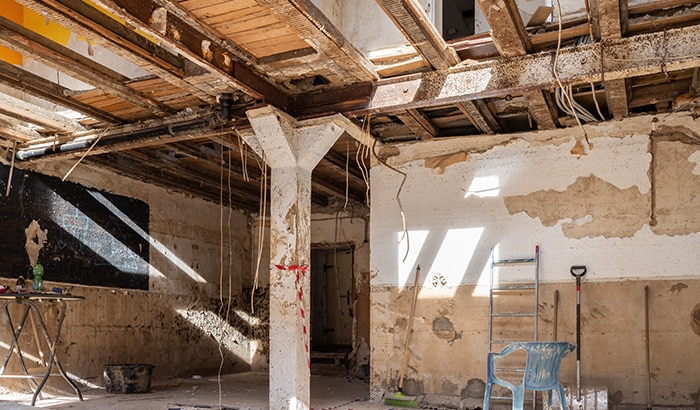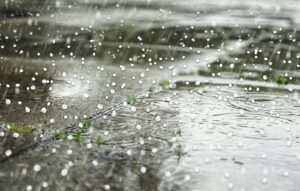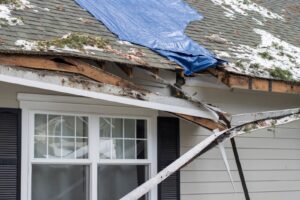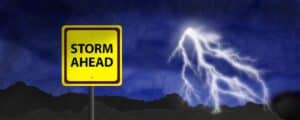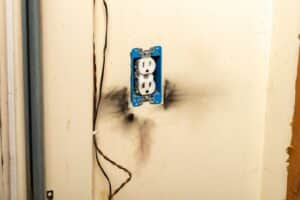Utah is prone to natural and man-made disasters, leaving behind a trail of destruction that requires the help of Utah disaster restoration services.
Utah’s diverse landscapes and rapidly changing weather are equally stunning as they are hazardous. The Beehive State faces its fair share of potential calamities, from wildfires and earthquakes to floods and mold infestations. When these unfortunate events occur, disaster recovery companies are crucial for a speedy and efficient cleanup. Today’s blog explores eight common Utah disaster restoration services you’ll need when disaster strikes.
1. Water and Flood Restoration
Utah’s dry climate doesn’t make the state immune to water damage. Heavy rains, flash floods, burst pipes, and leaking roofs all lead to spontaneous flooding. Flood restoration professionals are equipped to remove the water, dry the affected areas, and treat the area to prevent future mold or structural damage. Here is a quick rundown of what to expect when a flood restoration expert arrives at your home:
- First, they will inspect the area wearing protective gear.
- Next, they will extract any standing water from the property.
- Once the water is removed, a thorough inspection is conducted to assess the extent of the structural damage caused by the flood. They will evaluate the foundation’s condition, walls, floors, and ceilings.
- After inspection, the expert will dry the affected area to prevent mold growth. If mold has already reared its ugly head, your flood expert will employ specialized techniques to remove the mold and prevent its recurrence.
- Finally, disaster recovery companies will provide detailed documentation for insurance purposes. You’ll receive photographs and documents to help with the insurance claim process.
2. Mold Remediation
Utah’s fluctuating temperatures create the ideal environment for mold growth, especially when coupled with water damage aftermath. Mold remediation services are essential to remove mold and prevent its return. Mold growth may cause health problems and damage property if not addressed promptly and correctly. Here’s what a mold remediation specialist will do to eradicate the problem:
- Inspection – A mold removal expert will survey the affected areas and identify the type of mold present.
- Containment – They will seal off the affected areas to prevent mold from spreading to other areas.
- Removal – Next, they will remove any contaminated materials and decontaminate all non-porous surfaces. Scrubbing, sanding, and suppression techniques are used to remove the growth.
- Restoration – Drywall, insulation, and other previously removed materials are restored to their pre-mold conditions.
- Testing – Post-remediation testing ensures the mold problem has been effectively addressed.
3. Smoke Damage Restoration
Although they’re cut from the same cloth, smoke and fire damage differ. Smoke damage is produced by a fire’s smoke but not by the fire itself. Smoke leaves behind a layer of soot and a stench that is challenging to eradicate. It also has a greasy-like consistency that makes it difficult to remove. There are several types of smoke damage that disaster recovery companies assist with, including:
- Wet smoke damage – Low-temperature fires produce wet smoke. This is the most difficult to remove since it is thick and sticky.
- Dry smoke damage – Dry smoke leaves behind a powdery soot that is a bit easier to clean and wipes away neatly.
- Protein smoke damage – Protein smoke refers to the fumes from burning high-protein foods. Meat, poultry, fish, and eggs are the biggest culprits. This smoke leaves behind a yellow-brown, greasy residue that is best removed by professionals.
4. Fire Damage Restoration
Fires are one of the most devastating forces of nature a home or business can experience. Whether it is smoke damage, structural damage, or a combination of both, you want a professional to handle the repairs.
Fire damage is the result of the burning or melting of objects due to excessive heat. Fire disaster restoration covers the damage caused by the flames and intense fire heat. This might include reconstructing structural materials or replacing badly damaged property and valuables. It might also include electrical and plumbing repairs if necessary. Fire damage and water damage often occur concurrently.
5. Storm Damage Restoration
An unexpected weather event can wreak serious havoc on your home. Windstorms, flooding, hail, blizzards, tornadoes, and thunderstorms are some of the wide range of weather phenomena you might experience in Utah. These storms often lead to roof damage, broken windows, structural issues, and more. Storm damage restoration services are critical to repair and rebuild affected properties.
When Mother Nature threatens your home, prompt restoration is essential. Storm disaster restoration services will clean up any water, mud, or debris left behind by the storm and repair structural damage.
6. Earthquake Damage Restoration
Utah is earthquake country — The Intermountain Seismic Belt runs through the state, making it susceptible to earthquakes. Seismic activity often triggers a succession of potential hazards, including ground shaking, rockfalls, surface fault rupture, fires, gas leaks, landslides, liquefaction, and more. Disaster restoration companies assist with any or all these issues to restore your property to normalcy.
7. Biohazard Cleanup
Biohazard contamination can be very dangerous, so when it comes to biohazard cleanup, you want a professional to step in. Biohazard cleanup services are needed to remove contaminants safely and thoroughly, preventing health risks.
Some examples of biohazards include anthrax, HIV, Ebola, botulism, tuberculosis, cholera, salmonella, and yellow fever.
A licensed technician will clean, sanitize, and deodorize the site where the event occurred. Biohazard cleanup is a service that requires industry experience, specialized equipment, and appropriate certifications.
8. Sewage Cleanup
Sewage Damages are unexpected, hazardous, and difficult to properly clean and repair. Sewage cleanup professionals are equipped to remove waste, disinfect affected areas, and mitigate the risks associated with sewage contamination. They also wear appropriate personal protective equipment (PPE) like gloves, masks, goggles, and waterproof clothing to prevent exposure to hazardous materials.
Here are a few kinds of sewage damage you should know about:
- Clogged or backed-up sewage lines
- Burst pipes
- Overflowing toilets
- Sump pump failure
- Sewage backup from municipal lines
- Human error, such as flushing inappropriate items, pouring grease down the drain, etc.
- Natural disasters
9. Asbestos Abatement
Asbestos was used in many buildings in Utah before its health risks were fully understood. When these affected materials are disturbed, the resulting fibers pose severe health hazards. Asbestos abatement services are crucial for safely removing these materials in compliance with regulations.
Here’s what you should expect when you hire asbestos abatement services:
- Assessment and inspection – An initial assessment is conducted to determine the presence of asbestos-containing materials within a building. Samples are collected and sent to a certified testing laboratory.
- Containment and isolation – Isolating the area helps to prevent the release of asbestos fibers to other parts of the building.
- Wetting – Before any material is disturbed, it must be thoroughly wetted to prevent the release of airborne fibers.
- Removal – Careful removal happens through a combination of techniques, including manual removal, hand tools, and mechanical methods.
- Decontamination and disposal – The area is thoroughly decontaminated after removal, and all asbestos waste is sealed and transported to a hazardous waste disposal facility.
- Cleanup and clearance testing – A thorough cleanup and clearance testing is performed to ensure the area meets safety standards.
Importance of Disaster Restoration Services
Whether it’s a sudden wildfire in the dry summer months or a heavy winter snowstorm causing structural damage, the need for disaster restoration services in Utah cannot be overstated. Here are a few reasons why you should outsource these services instead of attempting restoration on your own:
- Rapid response – Disaster restoration professionals are equipped to respond speedily to emergencies.
- Safety and health – Disaster restoration experts ensure your property is safe for habitation after a devastating event.
- Professional expertise – Professionals have the knowledge, experience, and equipment necessary to address disaster-related issues effectively.
- Regulatory compliance – Reputable restoration businesses are well-versed in regulatory compliance and ensure all work is done per applicable laws and regulations.
- Peace of mind – Dealing with the aftermath of a disaster can be overwhelming — knowing you have trained experts on the case provides peace of mind during a difficult time.
Contact Black Diamond Restoration Today
Of all the Utah disaster restoration companies, you can trust the experts at Black Diamond Restoration to be your go-to source. With our years of experience, comprehensive range of services, and commitment to excellence, we are dedicated to helping communities rebuild and recover from the devastating effects of natural disasters.
Discover how our skilled professionals assist you through every stage of the restoration process. From assessing damages and developing customized plans to executing the work efficiently and safely, we have the expertise and resources to restore your property to its pre-disaster condition. Our team is available 24/7 to respond quickly and effectively to restore normalcy in your life.
Trust Black Diamond Restoration to handle the restoration process efficiently, carefully, and precisely. Contact Black Diamond Restoration today and let us restore your property to its safe and habitable state after a disaster.

